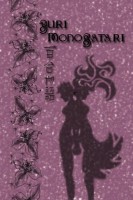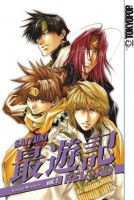 And the winner of the Nana Giveaway is…Jocilyn!
And the winner of the Nana Giveaway is…Jocilyn!
As the winner, Jocilyn will be receiving a copy of Ai Yazawa’s Nana, Volume 1 as published by Viz Media. Nana is a fantastic series that, for whatever reason, took me two tries to really get into, but then I was hooked. I was curious to know if other readers ever gave a manga or series a second chance and what their experiences were. Most, but not all, of those who commented were willing to try a manga a second (or even third!) time. Sometimes their opinions would change after a second reading, and sometimes they still couldn’t enjoy it. Do check out the Nana Giveaway comments for the details of everyone’s story!
Some manga (that might be) worth a second look:
Attack on Titan by Hajime Isayama
Berserk by Kentaro Miura
Fate/Stay Night by Dat Nishiwaki
Fushigi Yuugi: Genbu Kaiden by Yuu Watase
Knights of Sidonia by Tsutomu Nihei
Nana by Ai Yazawa
Magi by Shinobu Ohtaka
Maka-Maka: Sex, Life, and Communication by Torajiro Kishi
Ogre Slayer by Kei Kusunoki
One Piece by Eiichiro Oda
Otomen by Aya Kanno
Shakugan no Shana written by Yashichiro Takahashi, illustrated by Ayato Sasakura
X by CLAMP
xxxHolic by CLAMP
Thank you for everyone who entered the giveaway and shared your manga-reading experiences. I hope to see you again for the next one!














